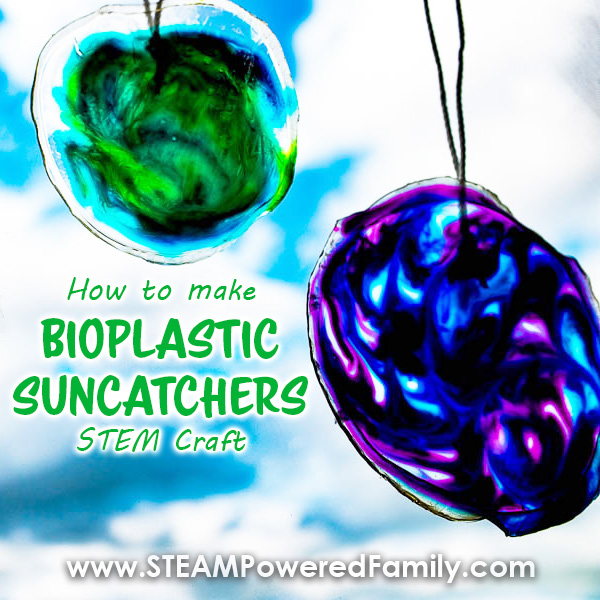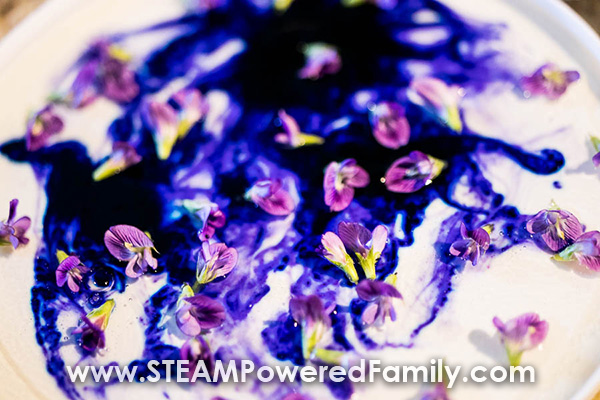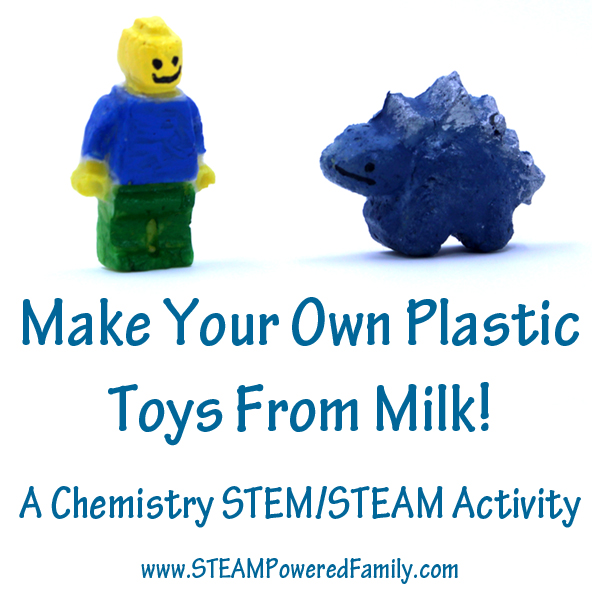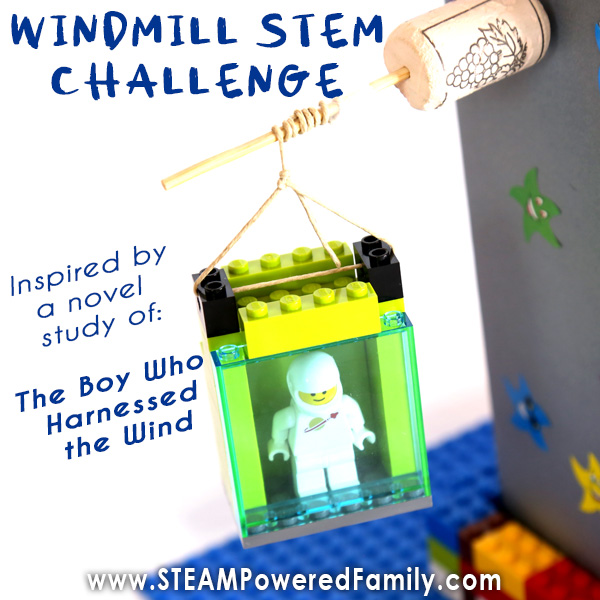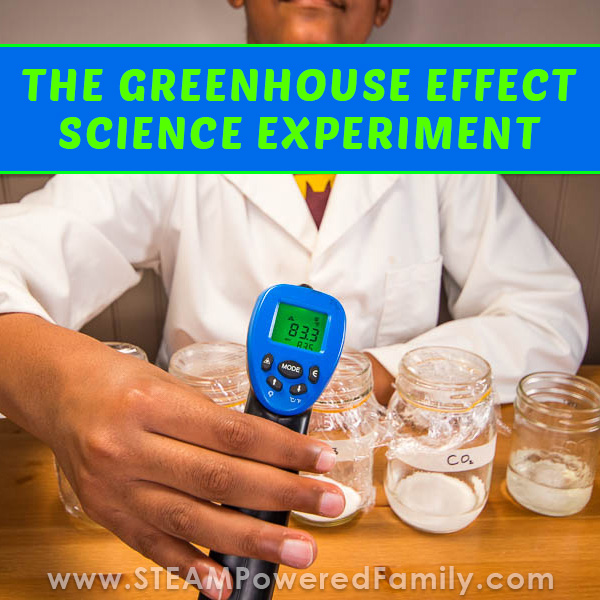How To Make A Bioplastic Suncatcher
Making plastic is a fantastic activity to do with your upper elementary and middle school students. In this project, we are making a simple suncatcher that will add incredible beauty and colour to your learning space. Students will come away with a greater understanding of polymers, plastics and chemistry, all using easily accessible items in the pantry. Check out this fantastic Bioplastic Suncatcher Project for kids! Perfect for summer STEM, summer camp or just to have fun with kitchen science!
How To Make a Plastic Suncatcher
Disclaimer: This article may contain commission or affiliate links. As an Amazon Influencer I earn from qualifying purchases.
Not seeing our videos? Turn off any adblockers to ensure our video feed can be seen. Or visit our YouTube channel to see if the video has been uploaded there. We are slowly uploading our archives. Thanks!
I love making bioplastics with the kids at home. Not only does it teach them some incredible scientific principles, but it is a great way to learn about renewable resources, environmentally friendly techniques, and how to be a good steward of our Earth.
This particular activity brings in some art and results in beautiful pieces that will brighten any room or classroom. Today we are making bioplastic suncatchers!
Although we have made casein plastic in the past, it is an opaque plastic that limits the projects we can use it for. In case you missed it, casein plastic is plastic made from milk. It is a really cool project that my elementary aged kids really enjoyed doing. We made so many small figurines. It was a lot of fun. Since they are solid white, the kids were able to paint their creations.
Learn how to make Milk Plastic.
Things all changed when we discovered how to make clear bioplastics. There is something really special about clear plastic that provides limitless inspiration for projects.
Learn how to make Gelatin Plastic.
Like today’s project making gorgeous bioplastic suncatchers!
Bioplastic Suncatcher Project
Check out this video of our bioplastic suncatchers! Can’t see the video? Ensure your adblockers are turned off. They block the video feed.
Supplies
For this project you will need:
Gelatin powder (ours comes in packets)
Water
Saucepan/pot
Stove or warming plate
Spoon
Whisk
Container lids (yogurt containers, coffee tins, etc. Any plastic lid from a container should work)
Food colouring
Toothpicks
Butter knife
Parchment Paper
String or ribbon
Glue or tape
Directions
Ensure your lids are clean and dry, place on parchment paper with food colouring and toothpicks ready to go.
Add 75mL of water and 3 gelatin packets (or 3 tablespoons of gelatin powder) to the pot and place over medium-low heat. Whisk together as it heats until completely mixed. Once the mixture starts to steam and thicken a bit, remove it from the heat.
Using a spoon gently scrape the foamy layer off and discard. If you don’t remove all the foam now it will cause some cloudiness in your final plastic. The better you are at removing the foam, the more clear your final plastic will be. And with suncatchers we want our plastic to be as clear as possible!
Pour the mixture into the lids. Add a few drops of food colouring. I found liquid food colouring worked the best. Gel was very dark and didn’t mix as well. Using a toothpick make designs by swirling the colours through the mixture. You can swirl together two or three different colours.
You can also add additional items. We included flowers from the garden in one of ours. Glitter would also be a fun addition.
Work efficiently, it will start to thicken and set up quite fast.
Let the mixture set up for 24 hours.
After 24 hours it will be very rubbery. Use a knife to seperate the plastic from the edges, then carefully remove it from the lid and place on parchment paper to continue hardening. If you place another sheet of parchment paper, then a book, over the plastic while it is hardening, it will keep them from curling. We didn’t mind the curling, it gave the pieces character. So the choice is yours.
Let them set for another 24 to 48 hours until hard.
Using glue or tape, add a loop of string to the back for hanging.
Enjoy your suncatcher!
The Science of Bioplastics
This suncatcher project is created using what is known as bioplastics which are created from biomass or organic matter. Bioplastics are different from most mass produced plastics that are created from fossil fuels.
Gelatin is created by breaking down collagen which is found in all animals where its function is to bind cells together. Collagen is a very long chain of amino acids, the building blocks of proteins, that bonds to itself in a triple helix pattern. Students may recognize the helix pattern from our DNA studies.
Gelatin is long chains of hundreds of amino acids. At room temperature it is solid, but when you heat it up the bonds between the chains loosen, allowing them to slide and stretch apart. Gelatin also has a strong affinity for water (you may have noticed your gelatin seemed to almost suck up the water like a sponge when you added it to the pot). Hydrogen atoms that are attached to the side of the chains can bond with water molecules. When we heat up and mix our solution we are weakening the chains (which causes the mixture in the pot to liquify), then during the cooling process those hydrogen atoms form connections with the water molecules. This is called a hydrogen bond.
In our solution we have added a LOT of gelatin to a fairly small amount of water. All those water molecules bond with the hydrogen molecules, then the amino acid chain also starts to bond with itself, trapping those water molecules within it’s complex 3D structure. If we used more water, we would end up with more of a gummy candy consistency or even a jello consistency. But in this experiment all the water molecules are used up, so once it finishes curing we end up with a very hard, clear plastic that is perfect for creating our unique suncatchers.


